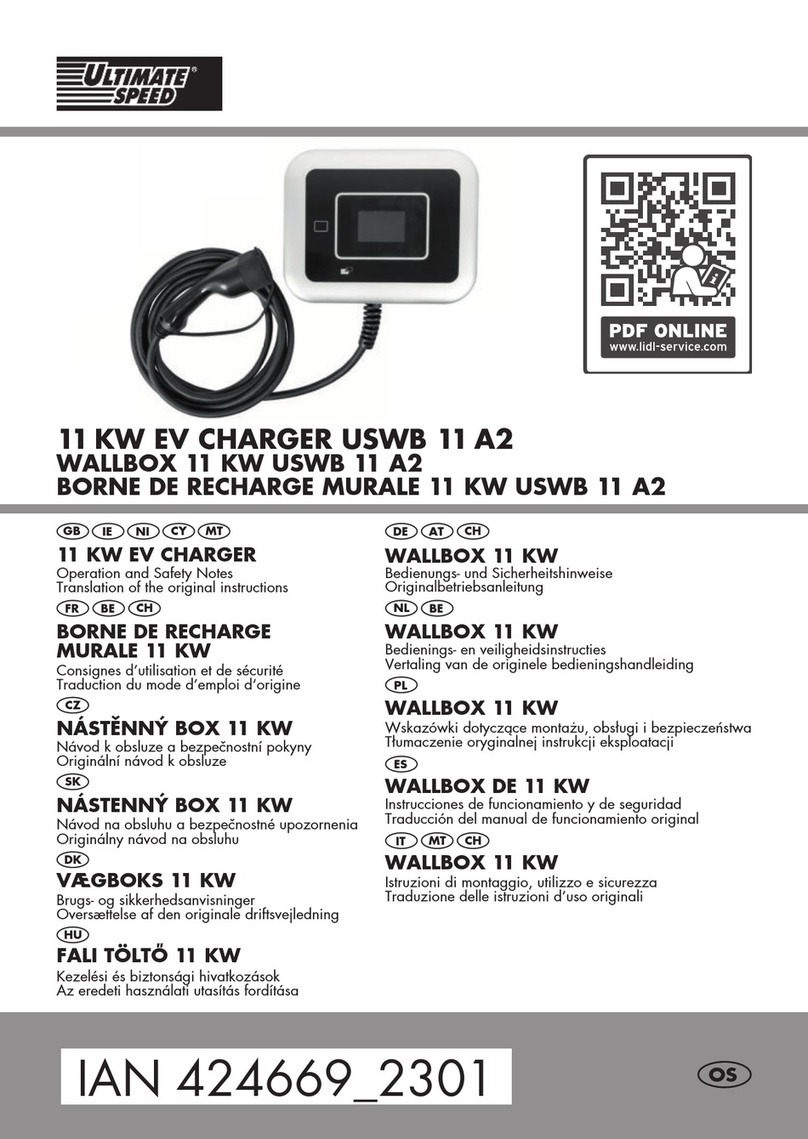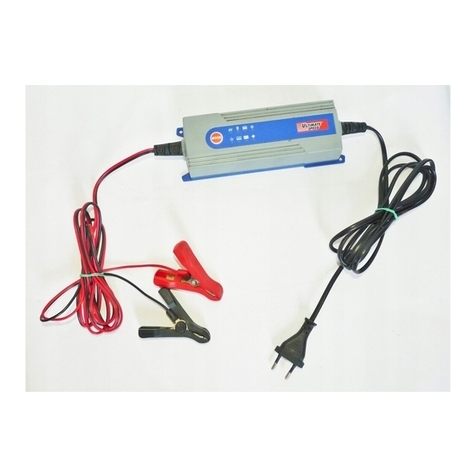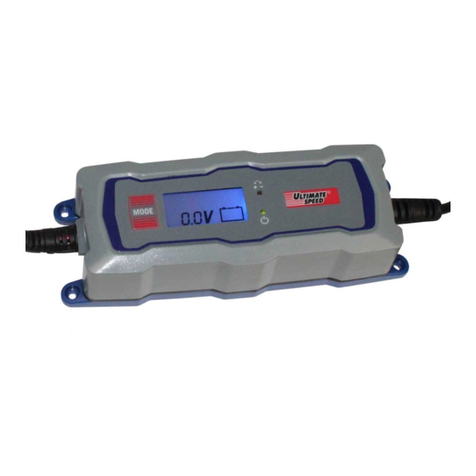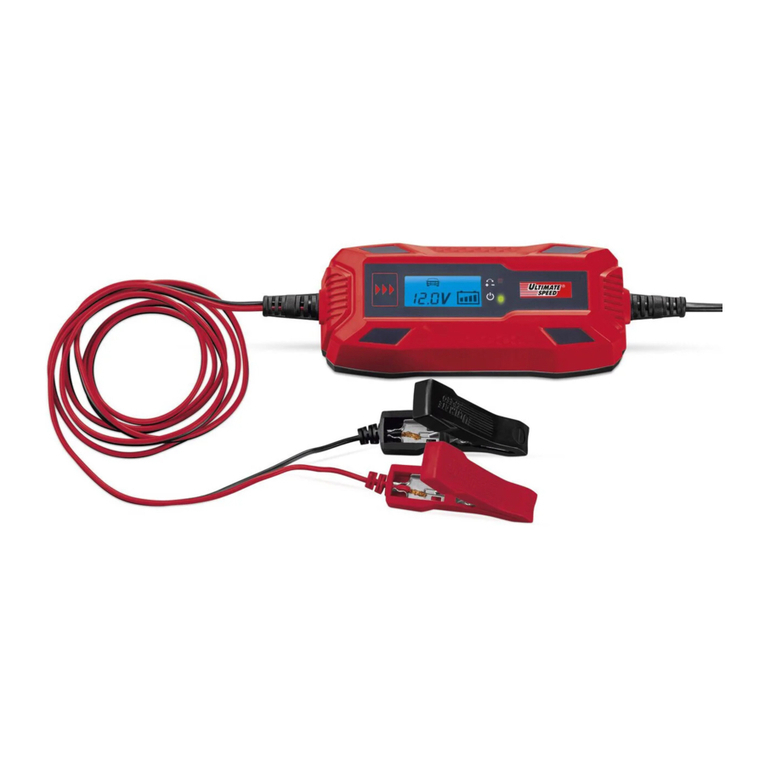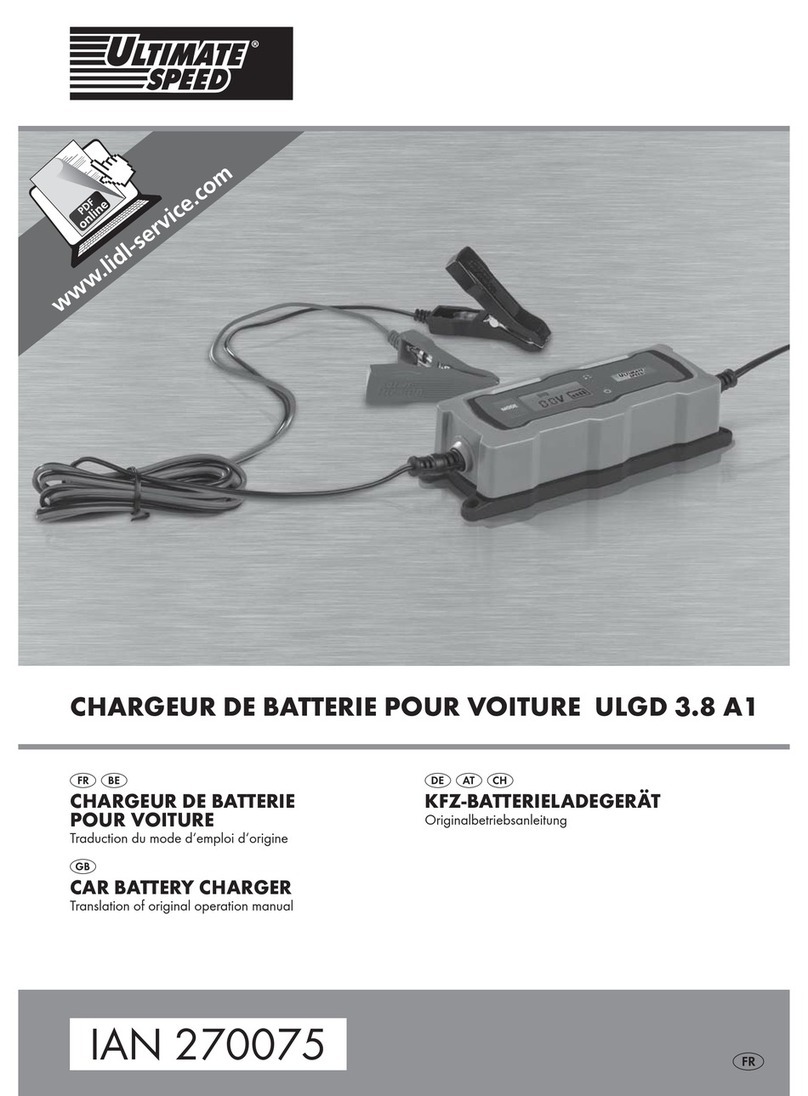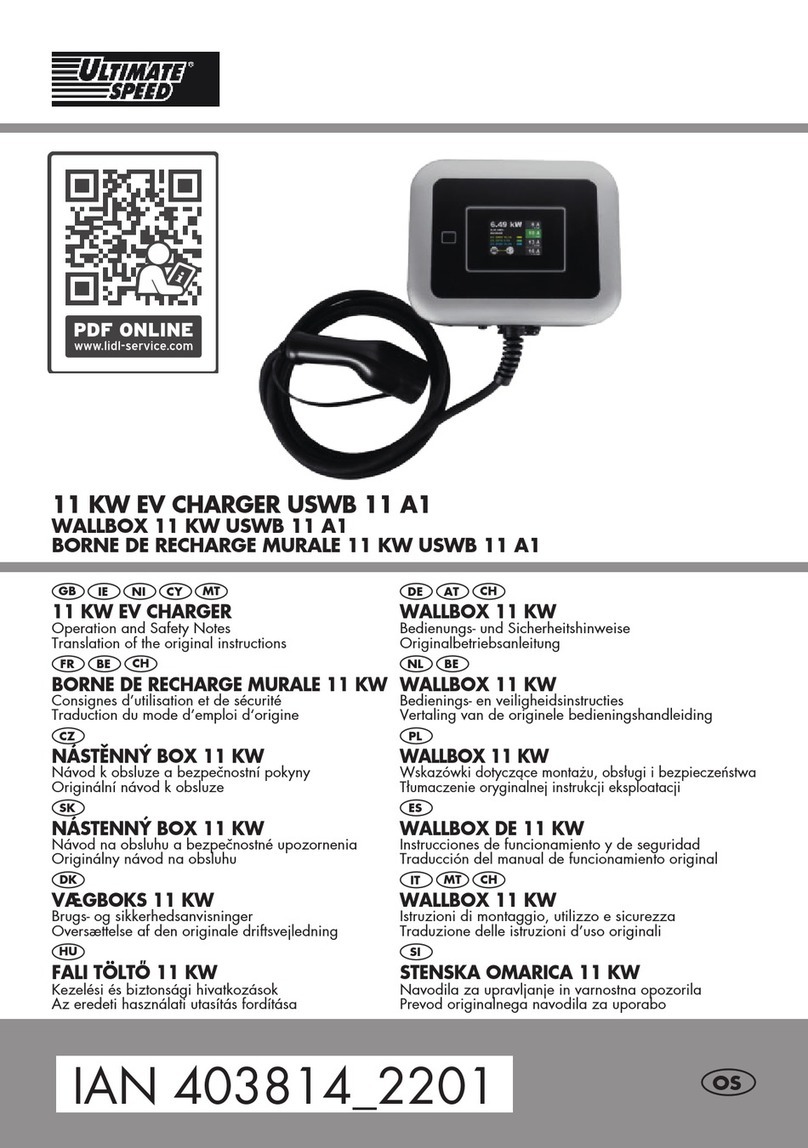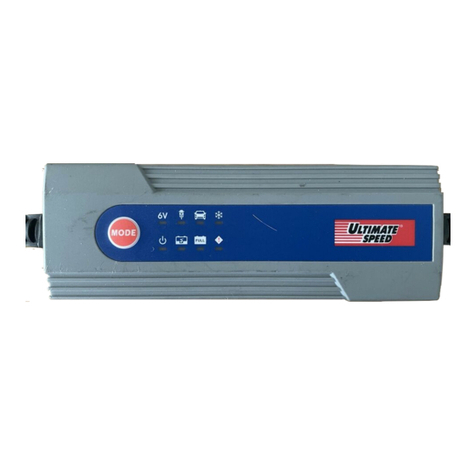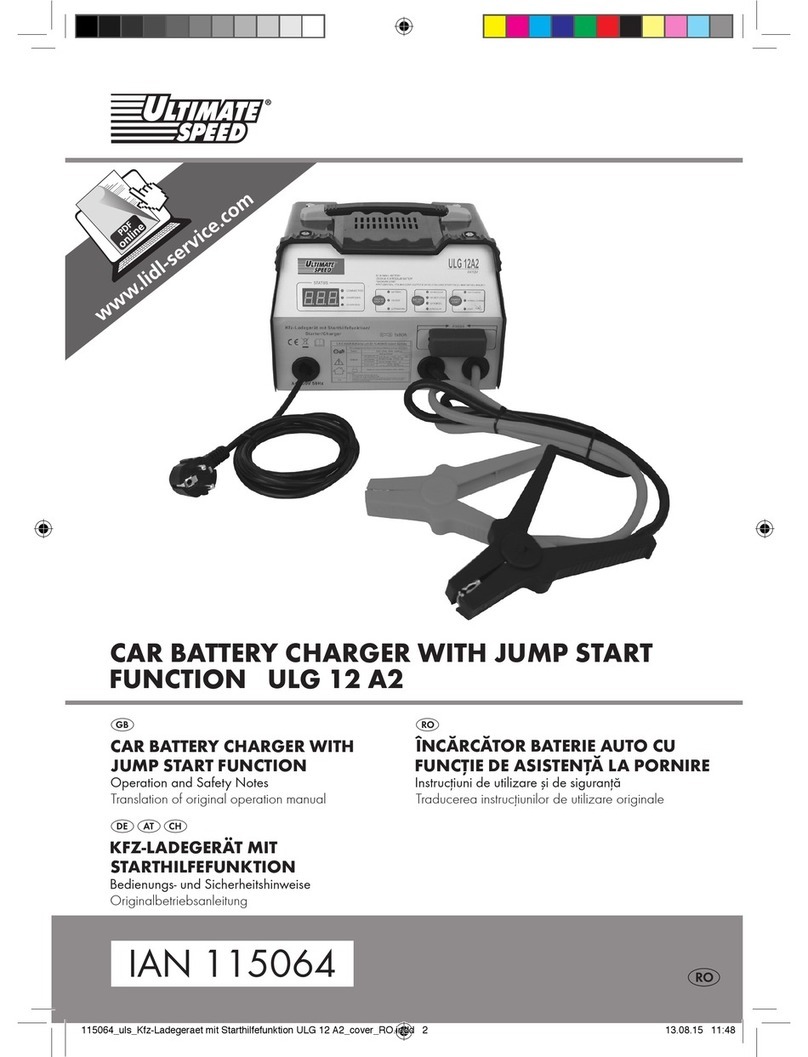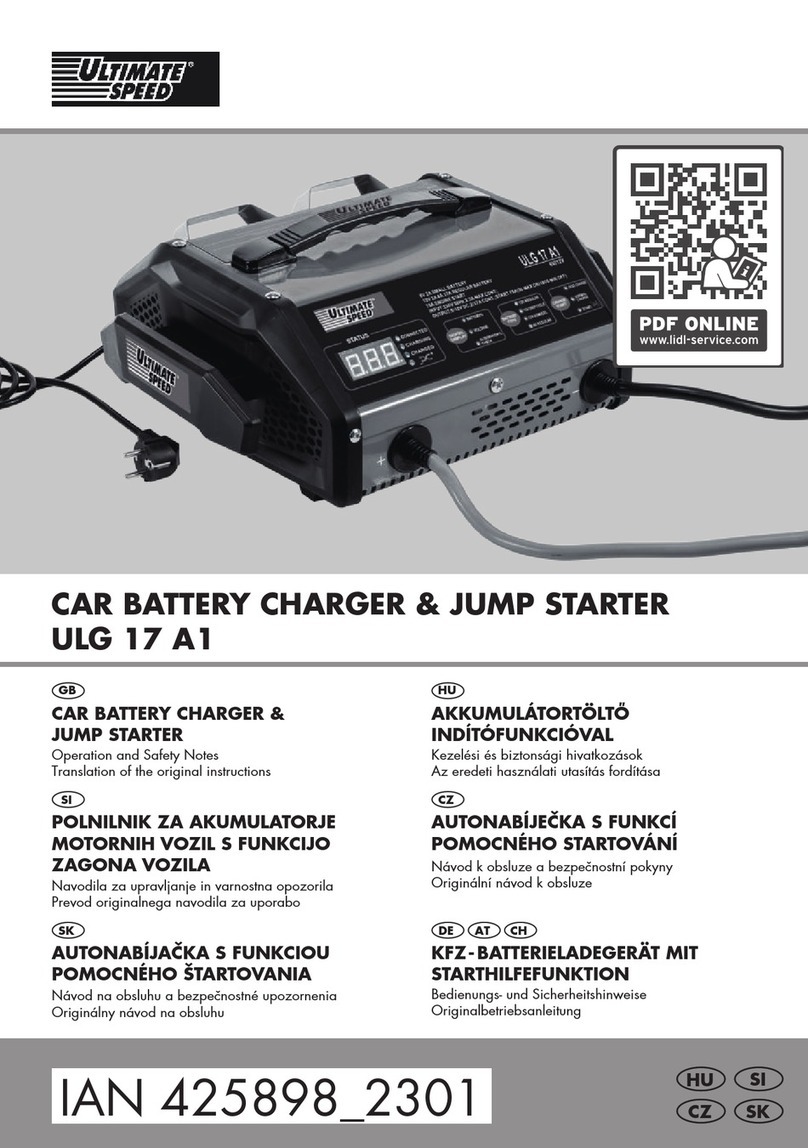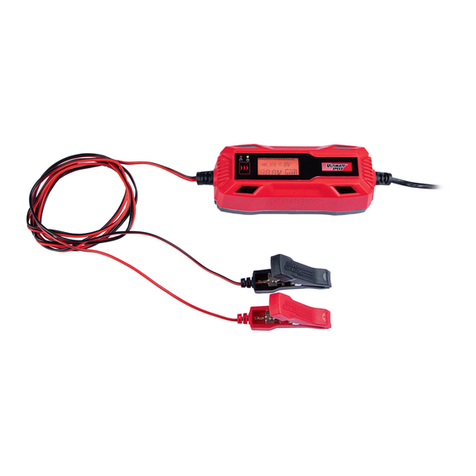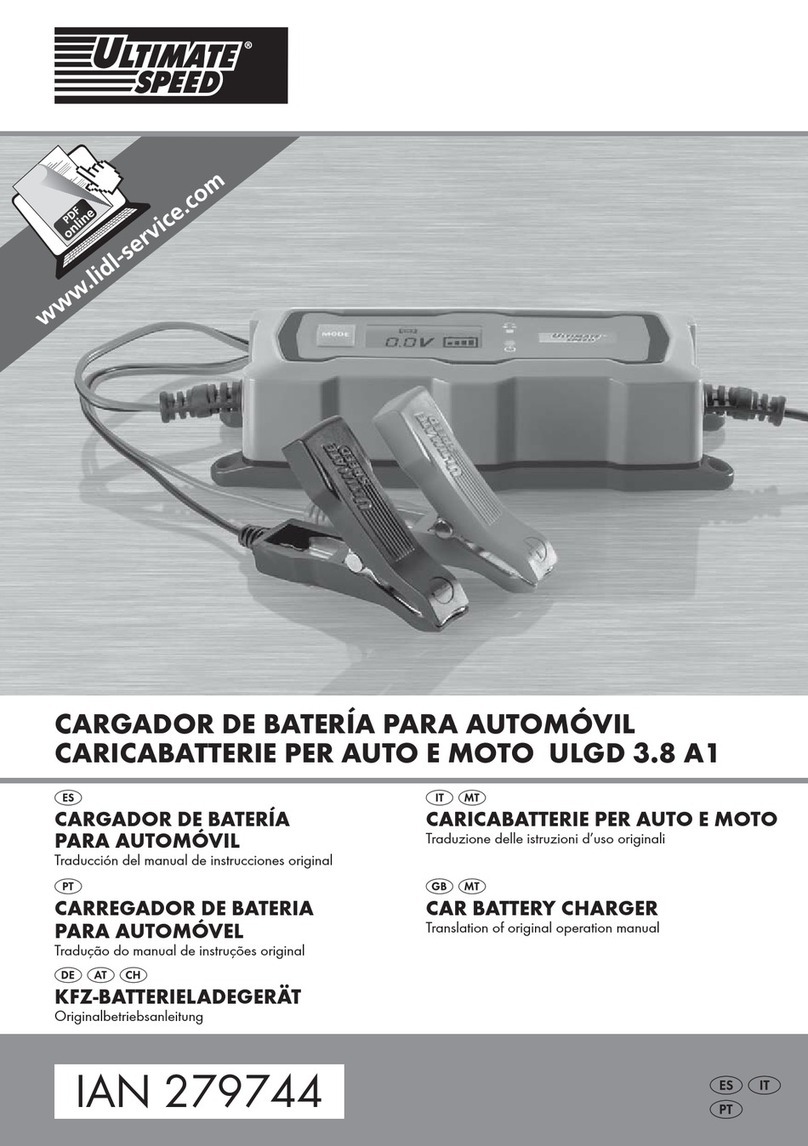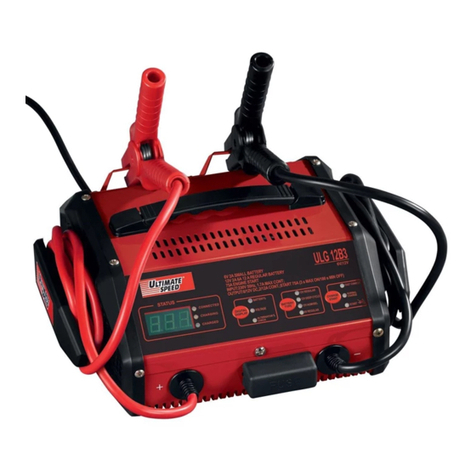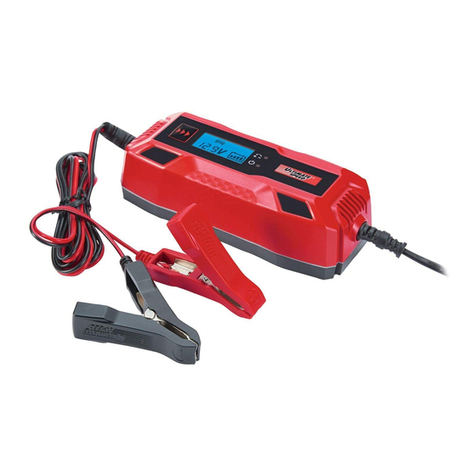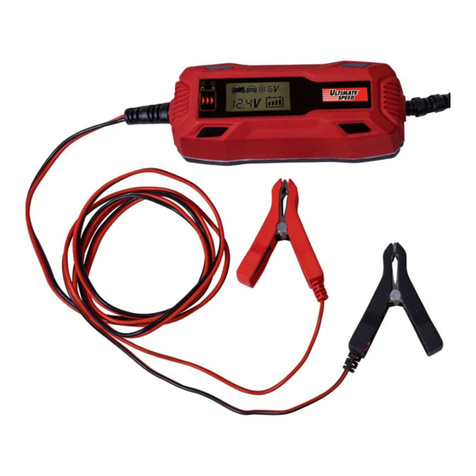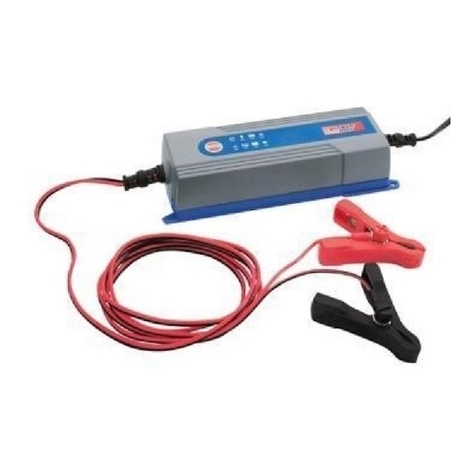GB 5
zTable of pictograms used
Read the operating instructions for
this product attentively and with
care before use.
~ 50 Hz Alternating voltage with a frequency
of 50 Hz
PLEASE NOTE: This symbol
indicates additional information and
explanations on the product and
its use.
Caution! Possible risks!
Caution! Risk of electric shock! Caution! Explosion hazard!
Dispose of the batteries in the
specified battery collection points.
Protection class IP20: Protection from
the device housing against touching
live or internal moving parts with
your fingers.
Suitable for lead-acid battery:
8 Ah – 250 Ah
Do not dispose of any electrical
devices in domestic waste!
Only for use in closed,
ventilated rooms!
Dispose of the device and
packaging in an environmentally
friendly manner!
Table of pictograms used ........................................................................................Page 5
Introduction ..............................................................................................................Page 6
Intended use .............................................................................................................Page 6
Scope of delivery.......................................................................................................Page 6
Parts description ........................................................................................................Page 7
Technical Specifications..............................................................................................Page 7
Safety instructions ...................................................................................................Page 7
Operation .................................................................................................................Page 11
Product properties......................................................................................................Page 11
Connecting to use the charging modes .........................................................................Page 11
Disconnecting after using the charging modes...............................................................Page 11
Select charging mode and start charging process ..........................................................Page 11
Using the jump-start function........................................................................................Page 13
Alternator test function................................................................................................Page 14
Replacing the fuse .....................................................................................................Page 14
Maintenance and care.............................................................................................Page 14
Information about recycling and disposal.............................................................Page 14
Original EC Declaration of Conformity...................................................................Page 15
Warranty and service information.........................................................................Page 16
Warranty conditions...................................................................................................Page 16
Warranty period and statutory claims for defects...........................................................Page 16
Extent of warranty......................................................................................................Page 17
Processing of warranty claims .....................................................................................Page 17
Service.......................................................................................................................Page 18
392476_2201 Kfz-Ladegerat mit Starthilfefunktion ULG 17 A1_content_LB4.indb 5392476_2201 Kfz-Ladegerat mit Starthilfefunktion ULG 17 A1_content_LB4.indb 5 13.04.22 11:2913.04.22 11:29
